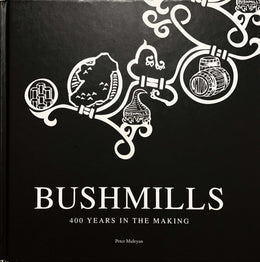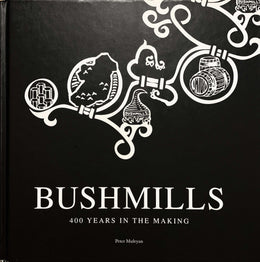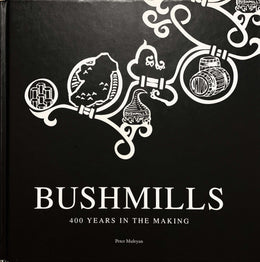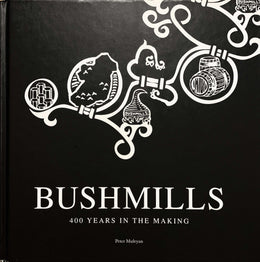

With the exception of Old Bushmills, every Irish distillery was still family owned. Although GUS was a large concern, it was not a player in the global drinks industry. By the early 1960s Sir Isaac Wolfson was looking for a way out, and for all the bluster about booming sales, Old Bushmills was selling just 24,000 cases each year in their home market of Northern Ireland.
At the time Charringtons were one of Britain's largest brewers. In 1964 they owned 4,900 tied houses and 655 off-licenses. They were already in the whiskey business, as they owned Auchentoshan distillery near Glasgow; they also operated a brewery in Northern Ireland.
The arrival of Charrington was inevitable. Right across the economy, companies in fields as diverse as banking and brewing were merging and consolidating. Larger firms, with specialist knowledge of specific markets were becoming more and more common, and all the while the world was getting smaller and smaller.
In one form or another Charringtons had been in the beer business since 1738, and it still had a family member at the helm. John Charrington was no stranger to the north Antrim coast, having been stationed there during the Second World War. It is not surprising that it was a personal relationship that put him into contact with Old Bushmills.
In 1961 Charringtons took over the Belfast-based wine and spirit merchants Lyle and Kinahan. John Charrington struck up a friendship with Sir Robin Kinahan. Although the Kinahan family originally came from Co. Cork and Robin's great-great-grandfather had been Lord Mayor of Dublin, he was a Unionist and a prominent member of the Orange Order. But he also deplored bigotry and sectarianism —his Belfast office employed both Protestant and Catholic workers.

Sir Robin knew everybody in the drinks industry in Northern Ireland at that time, and as a director of Charrington United Breweries, he was well placed to act as matchmaker. With GUS looking for a way out of distilling, and with John Charrington looking for acquisitions, one fine day in the spring of 1964, both men came calling to the sleepy village of Bushmills.
A deal was done and Charrington Kinahan Ltd. took over Old Bushmills for £750,000 cash and a million shares in Charrington United. The plan was a simple one: the parent company owned plenty of bars and off-licenses, and it would quickly be able to get Old Bushmills into more outlets than ever right across Great Britain.
When the news of the take over broke on July 17th 1964 it hit the front page of the Belfast News Letter. The secret had been so well kept, that this was the first most of the distillery workers knew about it. It was also the end of another era. Wilson Boyd took this opportunity to retire; he hadn't been well and his brother Austin succeeded him as MD.
Around this time a lot of things changed in the distillery. Until 1964 whiskey making at Old Bushmills was a seasonal job. Distilling would start in the late autumn when the barley had been harvested and malted, and would continue into early summer. With the arrival of Charrington, money was pumped into the distillery and the production season started to expand until it filled the entire year.
It was clear that under GUS there had been underinvestment and unwillingness to take difficult decisions about manning levels, management structure and economies of scale. The changes were soon in coming and when them came, it was clear that the future of Bushmills would be secured at the expense of Coleraine.
The Coleraine bottling hall was to be closed and a new one built on site in Bushmills as part of a £1.25 million expansion. In three short years a maturation warehouse joined the new bottling hall, but perhaps most significant was a new blending area.
Within a year sales to the USA were up by 25%, while UK sales were up 19%. Previous underinvestment came back to bite, when sales of Black Bush outstripped matured stocks of whiskey. It was a sign of a deeper malaise. By the end of the decade Charrington had merged with Bass to become the largest brewer in the UK. The company now commanded over 18% of the domestic market: now, more than ever, the company was focused on beer.
While there are many similarities between beer and the whiskey business, there is one significant difference. Beer doesn't have to be matured; brewers can therefore respond very quickly to changing consumer demand. Whiskey makers are forever planning not a month, or a year, but a decade or more ahead.
Consumer demand was also changing. White spirits were becoming more and more popular, particularly with women. Vodka doesn't require maturation, and was proving a very lucrative sideline for the brewers who had a vodka label. In the early days of the vodka revolution more than 95% of the UK market was supplied by British-made vodka, with a third of that market taken by vodka labels owned by brewers, like Charringtons 'Imperial'.
The rise in white spirits coincided with a slide in sales of whiskey and other brown spirits. The whiskey market had also started to fragment, as the public grew more sophisticated and moved away from generic drinks. In other words, instead of asking for a `gin and tonic' or a `whiskey and soda' in their local, people were looking for the kind of brands that were advertised on television or in magazines.
The British Monopolies Commission published a report into the drinks industry in April 1969:
"non-brewery owned distillers hold the major share of the United Kingdom market with a small number of brands [like].. Haig, Johnnie Walker, White Horse, Black and White, Dewar's and VAT 69 whiskies."
In other words the move was away from manufacturing to marketing, from making whiskey to packaging and selling it. By the late 1960s Bass-Charrington was adapting to keep ahead of the market. It sold Auchentoshan, the only distillery in Scotland to practice triple distillation. The company then purchased an agency for one of the brands that was being asked for in British pubs and off-licenses —VAT 69. By the early 1970s it was only a matter of time before Bass- Charrington would offload Old Bushmills.

US advertisng, 1968. By the late 1960s, OId bushmills had become a tasty takeover target.
Written by Peter Mulryan
The text is an excerpt from "Bushmills: 400 Years in the Making" (pp. 111 - 116), written by Peter Mulryan, published 2008 by Appletree Press Ltd.







